
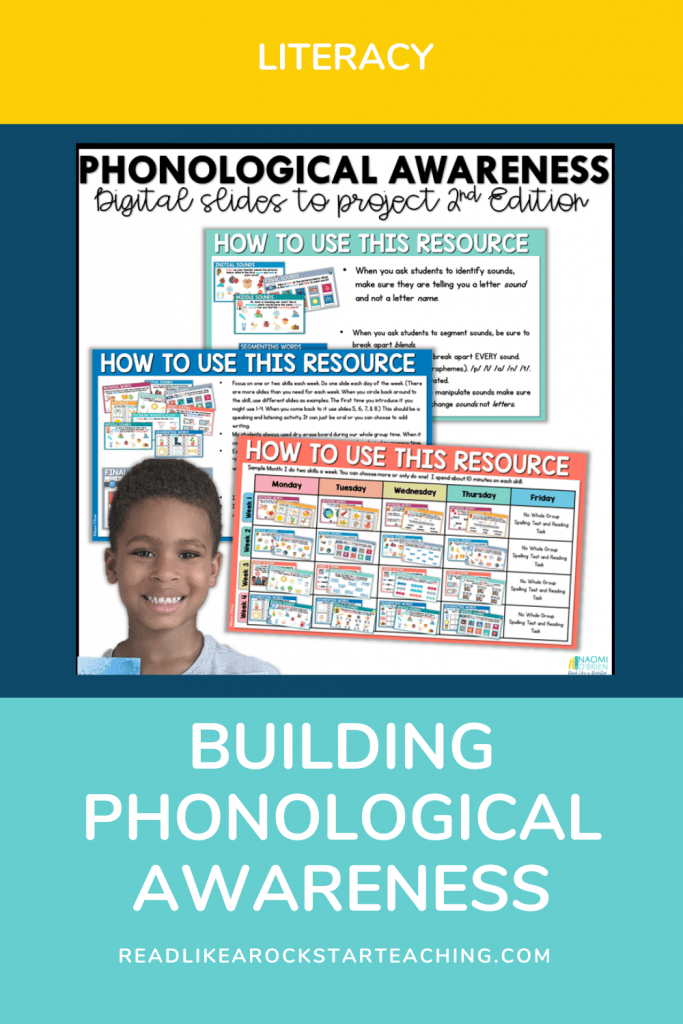

Let me tell you something about me….I love teaching phonological awareness activities! I nerd out when it comes to teaching kids how to read. These skills are so important and I want to give my students the best reading foundation possible. When I try to discuss teaching students about phonemic awareness with some teachers, they seem to be unsure of exactly what it entails.
If you teach K or 1, I hope you are confident in your skills teaching kids about onset & rime, blending words, phoneme manipulation and all that other good stuff.
If you’re not, don’t worry! That used to be me and I am here to help you! I have a free download for you that will help you teach these skills!
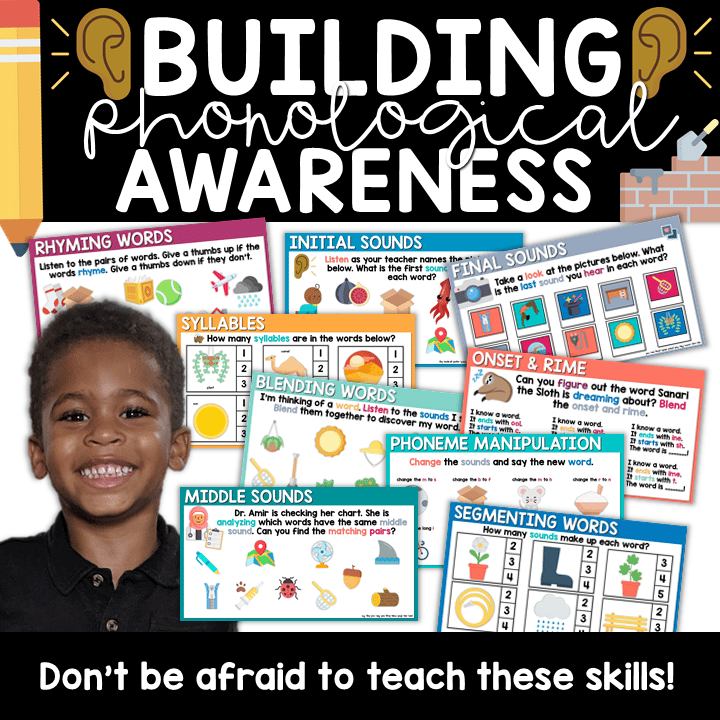
There are 9 skills that you should be practicing daily with your students throughout the year.
I like to focus on two each week. We go through all 9 skills two at a time in a repeating cycle.
Phonological awareness is all about how aware our students of are the sounds that make up words. There are many quick activities you can do daily. All you need is your voice and ears to hear them.
I want to show you some slides that I want you to show your students, okay? I’ll walk you through how to use each one!
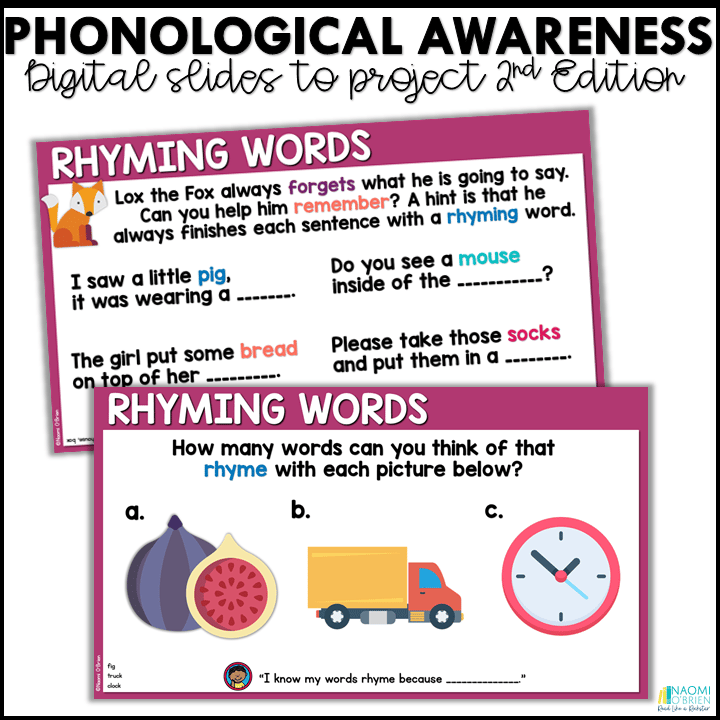
When you first introduce rhyming you’ll be doing a lot of modeling. Be explicit about why the words rhyme or don’t.
“Socks, box… they both have the /ox/ sound at the end.”
Some students think that words that have the same beginning sound rhyme. If they make this mistake, point out that they identified beginning sounds which is a skill they’ll learn later!
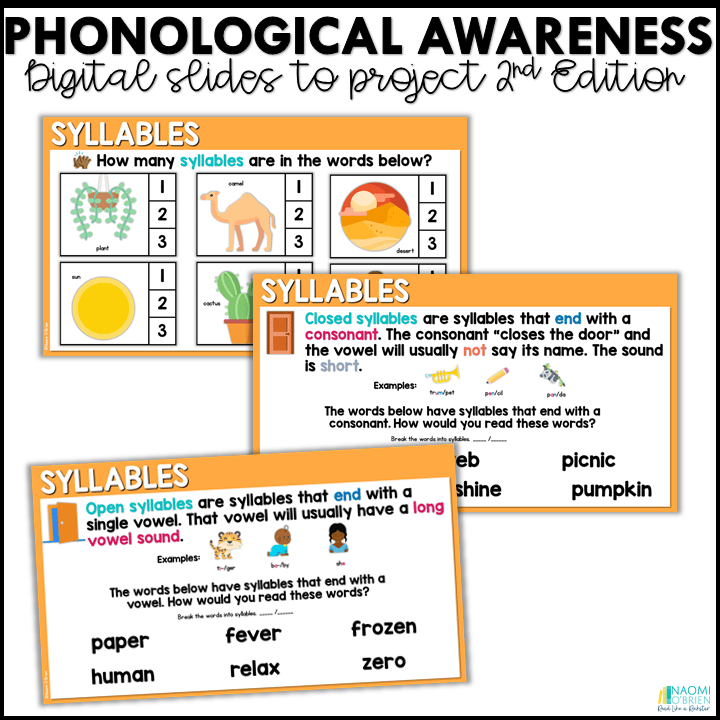
Teach a motion that helps your students hear the natural way words break apart.
If you hear a students making the mistake of saying e-v-e-r-y sound in a word, tell them, “Good job! You’re segmenting!” and teach them that syllables are not the same things.
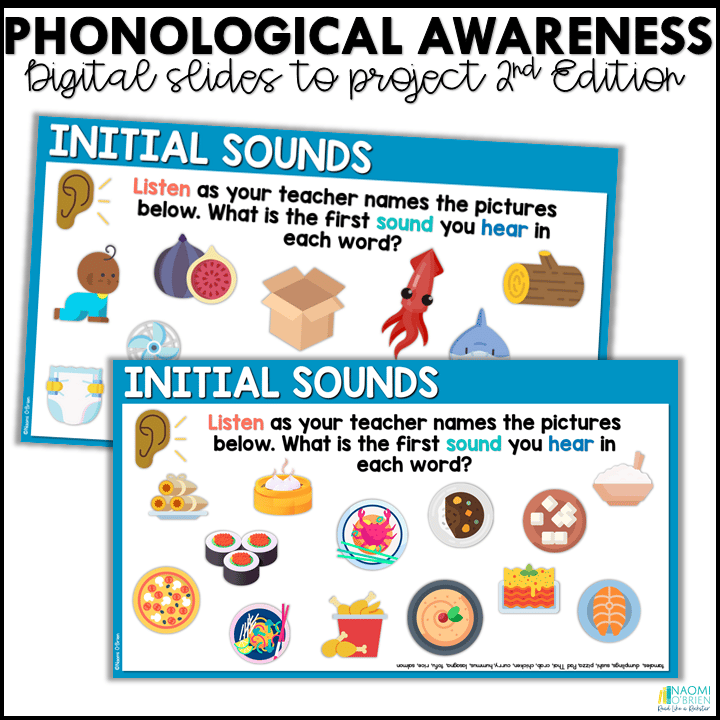
I find this skill to be pretty easy for students to get the hang of. Just rrrrrrrrrreally hold out the first sound when you are saying the words to emphasize the beginning sound.
Don’t worry if you don’t recognize all of those meals. They words are typed upside down in the bottom corner! Shhhhh….

If you’ve been working on initial and middle sounds, I’ve found that getting the students to quickly identify the last sound in a word is an easy skill to just add on.
You might be wondering why I jumped from initial to final. I find that students can hear the first and last sound much easier than they can hear the middle. I teach middle sounds later on.
Utilize fingers, counters, or anything you want to represent sounds so that students can “see” how the sounds can be isolated.

Onset: The first consonant or consonant blend.
Rime: The first vowel and all of the letters that follow it.
This is essentially teaching kids about word families! When students began to recognize chunks in words, their reading really takes off.
Take long pauses between the onset and rhyme when you are starting out. If students still can’t hear the word, say the sounds closer together.

Give students a lot of practice hearing you blend, but also give them the opportunity to blend. They may pronounce sounds differently than you. It’s important for them to practice saying sounds and putting them together to say a word.
When you first start out, you can have students repeat after you and ask them if they hear the word they said.
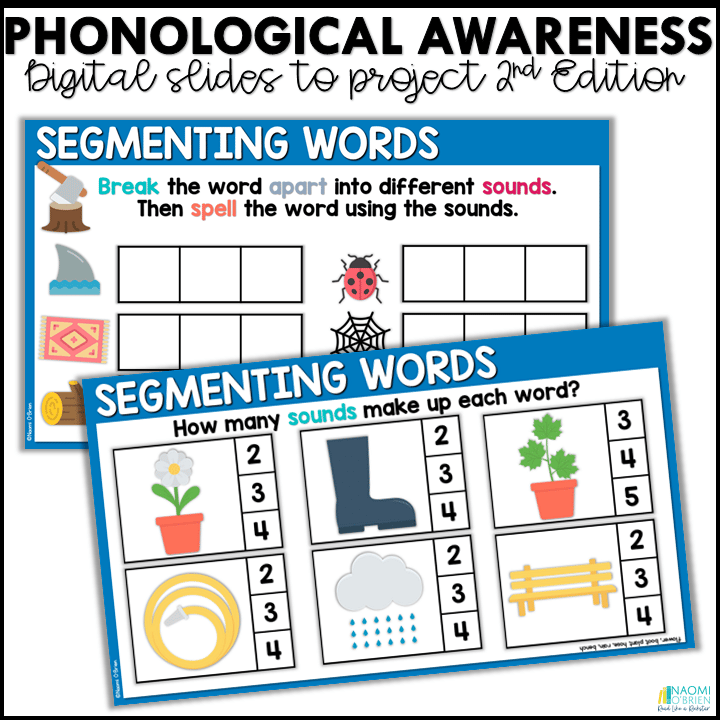
I tell my students segmenting words is the opposite of blending. We are now unblending the words we hear and trying to pull out and isolate every sound.
Remember, when a word has a consonant blend, like plant. Separate the /pl/ sound. It’s important for students to be able to break words apart into all of the sounds (graphemes) they contain. This will help them to become stronger spellers.
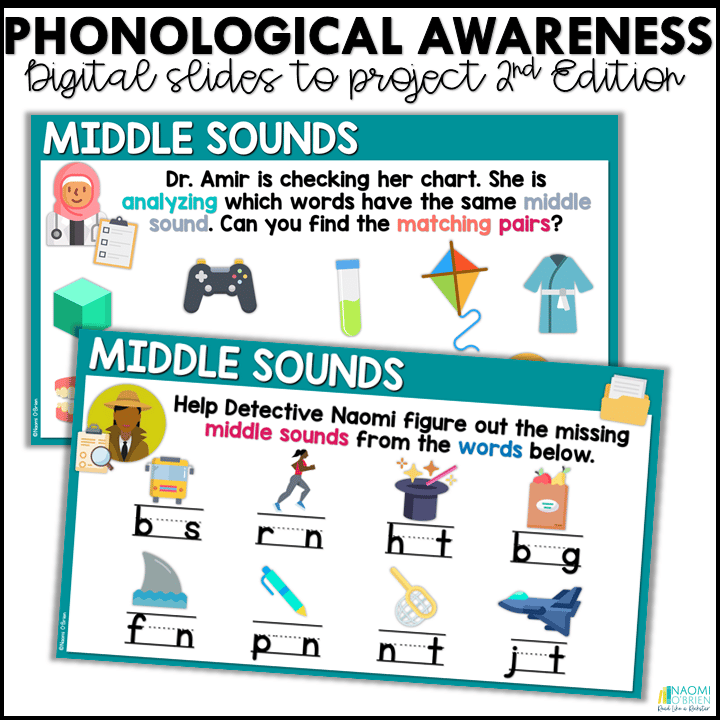
In my experience, when students are using sounding out words to spell independently, they frequently omit the middle sound.
I tell my students to pay close attention to this in their spelling after we learn how to identify middle sounds.
Tapping out sounds on fingers or down arms or using counters can help isolate these sounds and be helpful.
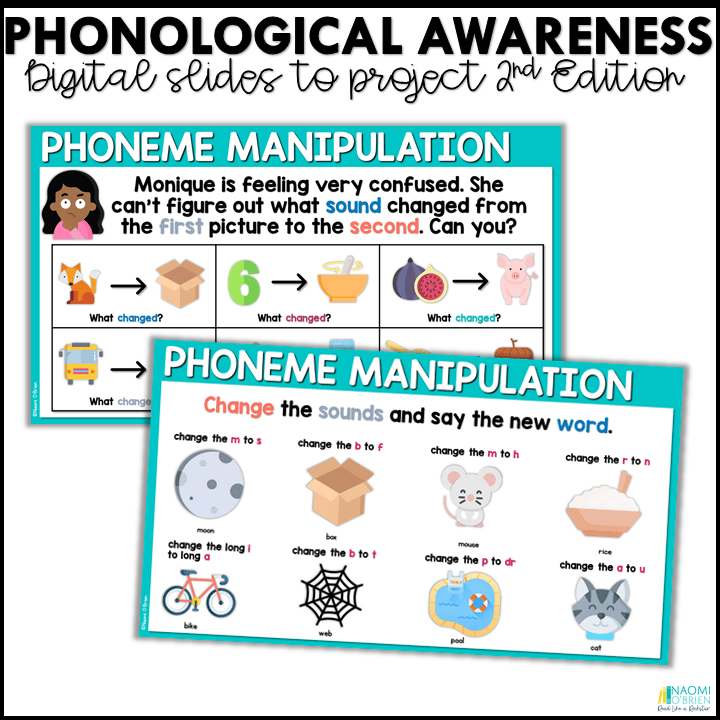
Manipulating sounds is the most complex of these skills. It can take students a lot of time to acquire these skills. That is perfectly fine. Don’t abandon opportunities to practice! Let students know this skill might be a bit trickier so they don’t get discouraged.
Make sure students are tell you SOUNDS and not LETTERS. Make sure you are not saying, “Change the M to S.” You should be saying the sounds. “Say moon. Now change /m/ to /s/. What’s the new word”
Students are using almost all of the other skills in order to master phoneme (sound) manipulation.
Okay, if you’ve made it this far, you’re ready to take this back to your students!
Stay the course.
I follow an I do, We do, You do model.
In the beginning of the year I am HEAVILY modeling these skills (i.e. Doing it all by myself) while they are soaking it in.
They will become more phonologically aware as they get more exposure through different activities that intentionally help them practice these skill.
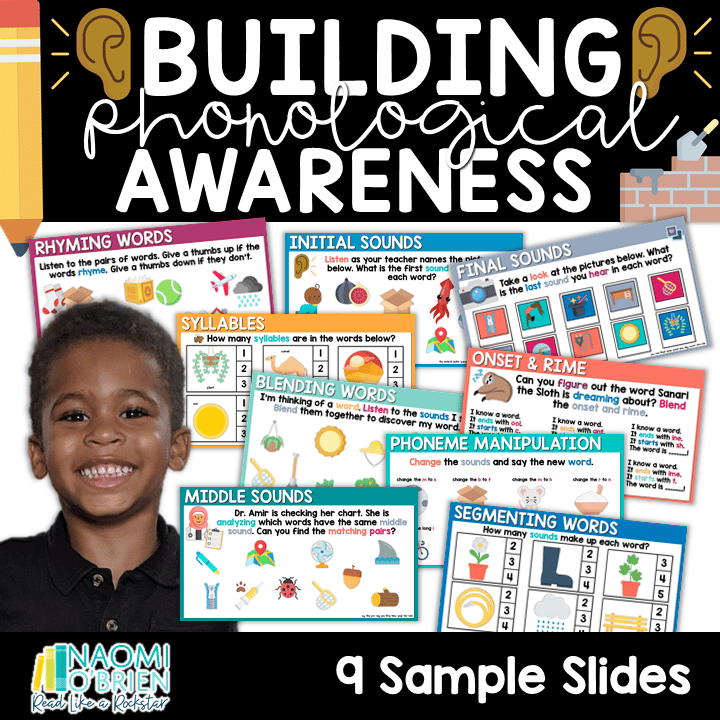
Head to my Free Resource Library to download 9 slides to take back to your classroom.
I hope this was helpful!
If 9 slides isn’t enough, how does over 140 sound? The bundle is now available!


From my family to yours, have a great week or weekend!


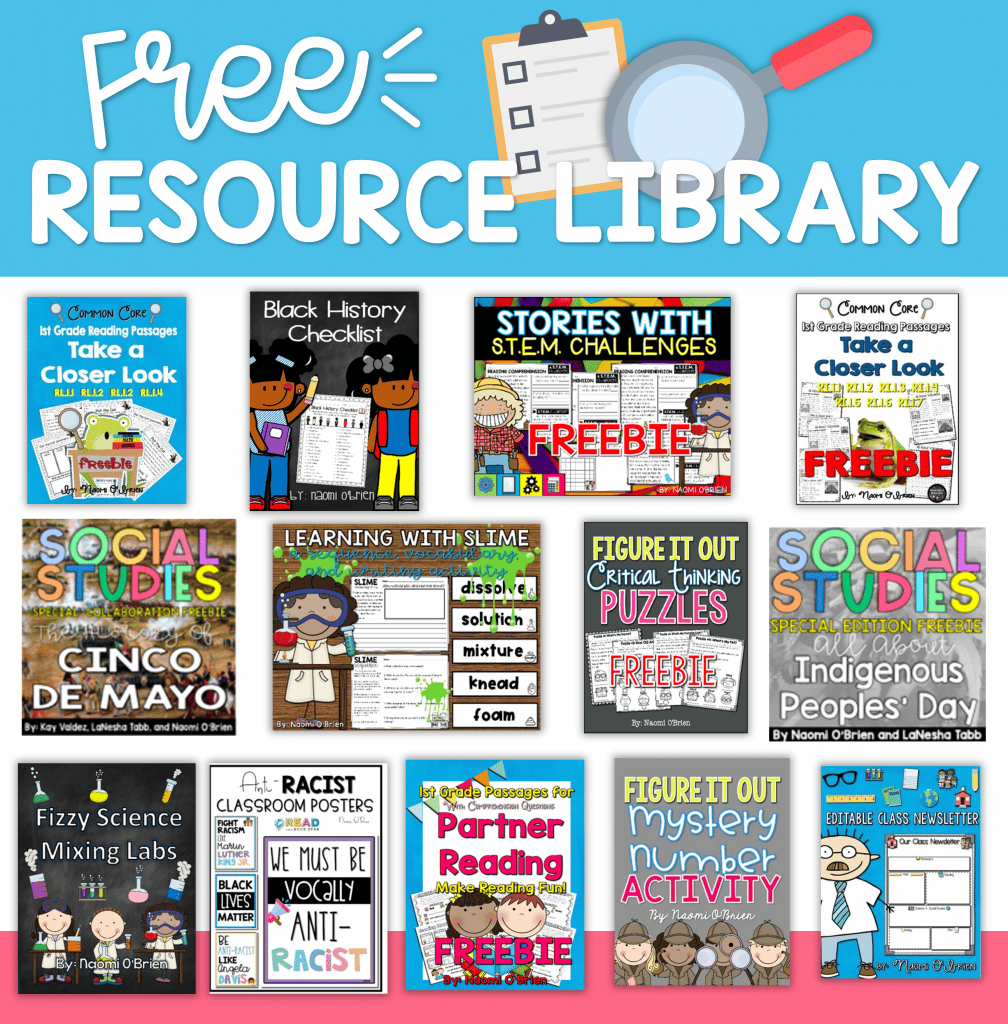
| Cookie | Duration | Description |
|---|---|---|
| cookielawinfo-checkbox-analytics | 11 months | This cookie is set by GDPR Cookie Consent plugin. The cookie is used to store the user consent for the cookies in the category "Analytics". |
| cookielawinfo-checkbox-functional | 11 months | The cookie is set by GDPR cookie consent to record the user consent for the cookies in the category "Functional". |
| cookielawinfo-checkbox-necessary | 11 months | This cookie is set by GDPR Cookie Consent plugin. The cookies is used to store the user consent for the cookies in the category "Necessary". |
| cookielawinfo-checkbox-others | 11 months | This cookie is set by GDPR Cookie Consent plugin. The cookie is used to store the user consent for the cookies in the category "Other. |
| cookielawinfo-checkbox-performance | 11 months | This cookie is set by GDPR Cookie Consent plugin. The cookie is used to store the user consent for the cookies in the category "Performance". |
| viewed_cookie_policy | 11 months | The cookie is set by the GDPR Cookie Consent plugin and is used to store whether or not user has consented to the use of cookies. It does not store any personal data. |
Thank you for your interest in booking a private professional development experience! Please fill out our Booking Inquiry form and a member of our team will contact you soon.
2 Responses
Hello,
I have been purchasing the monthly subscription for awhile now. I am not sure where to get all of the resources that the subscription provides.
Can you please help guide me?
I’m excited to start utilizing everything this year!
I am one of your biggest fans, a Sped teacher for 22 years. Thank you Naomi!
Please email [email protected] for further assistance.